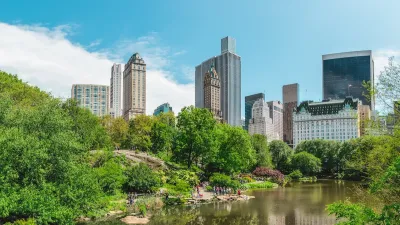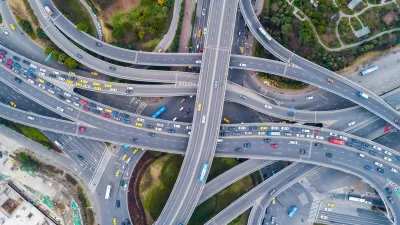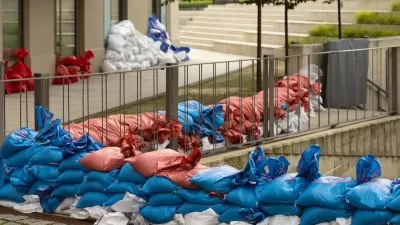While a few cities have detailed goals and investment strategies for building their green workforce, most U.S. cities fail to address the need for the training and education of a new generation of workers.

Cities around the country are implementing climate action plans, but many omit a crucial component: a green workforce, writes Kery Murakami in Route Fifty.
This isn’t the case across the board, Murakami notes. “Los Angeles, for instance, has set a target of creating 400,000 green jobs by 2050 through partnerships with colleges and universities and by funding startups.” An initiative called Hire LA has provided 913 young adults with green jobs since 2019. And Denver has set aside $40 million per year for emissions reduction efforts, including a ‘green economy’ summer academy for high school students.
But cities like Los Angeles, Denver, and Cincinnati, which all have green workforce development goals, are the exception to the rule. According to research from Brookings, “Forty-seven of the 50 city climate plans examined by the think tank’s researchers mentioned the importance of training workers, but did so ‘only in passing.’” Most did not examine how workforce development would be funded. “Since most cities’ climate plans are not detailed, the report said that it’s not surprising that “they also do not say what their goals are or when they are hoping to reach them.”
FULL STORY: Most cities' climate plans don’t plan for a green workforce, report says

Alabama: Trump Terminates Settlements for Black Communities Harmed By Raw Sewage
Trump deemed the landmark civil rights agreement “illegal DEI and environmental justice policy.”

Planetizen Federal Action Tracker
A weekly monitor of how Trump’s orders and actions are impacting planners and planning in America.

Why Should We Subsidize Public Transportation?
Many public transit agencies face financial stress due to rising costs, declining fare revenue, and declining subsidies. Transit advocates must provide a strong business case for increasing public transit funding.

Understanding Road Diets
An explainer from Momentum highlights the advantages of reducing vehicle lanes in favor of more bike, transit, and pedestrian infrastructure.

New California Law Regulates Warehouse Pollution
A new law tightens building and emissions regulations for large distribution warehouses to mitigate air pollution and traffic in surrounding communities.

Phoenix Announces Opening Date for Light Rail Extension
The South Central extension will connect South Phoenix to downtown and other major hubs starting on June 7.
Urban Design for Planners 1: Software Tools
This six-course series explores essential urban design concepts using open source software and equips planners with the tools they need to participate fully in the urban design process.
Planning for Universal Design
Learn the tools for implementing Universal Design in planning regulations.
Caltrans
Smith Gee Studio
Institute for Housing and Urban Development Studies (IHS)
City of Grandview
Harvard GSD Executive Education
Toledo-Lucas County Plan Commissions
Salt Lake City
NYU Wagner Graduate School of Public Service





























